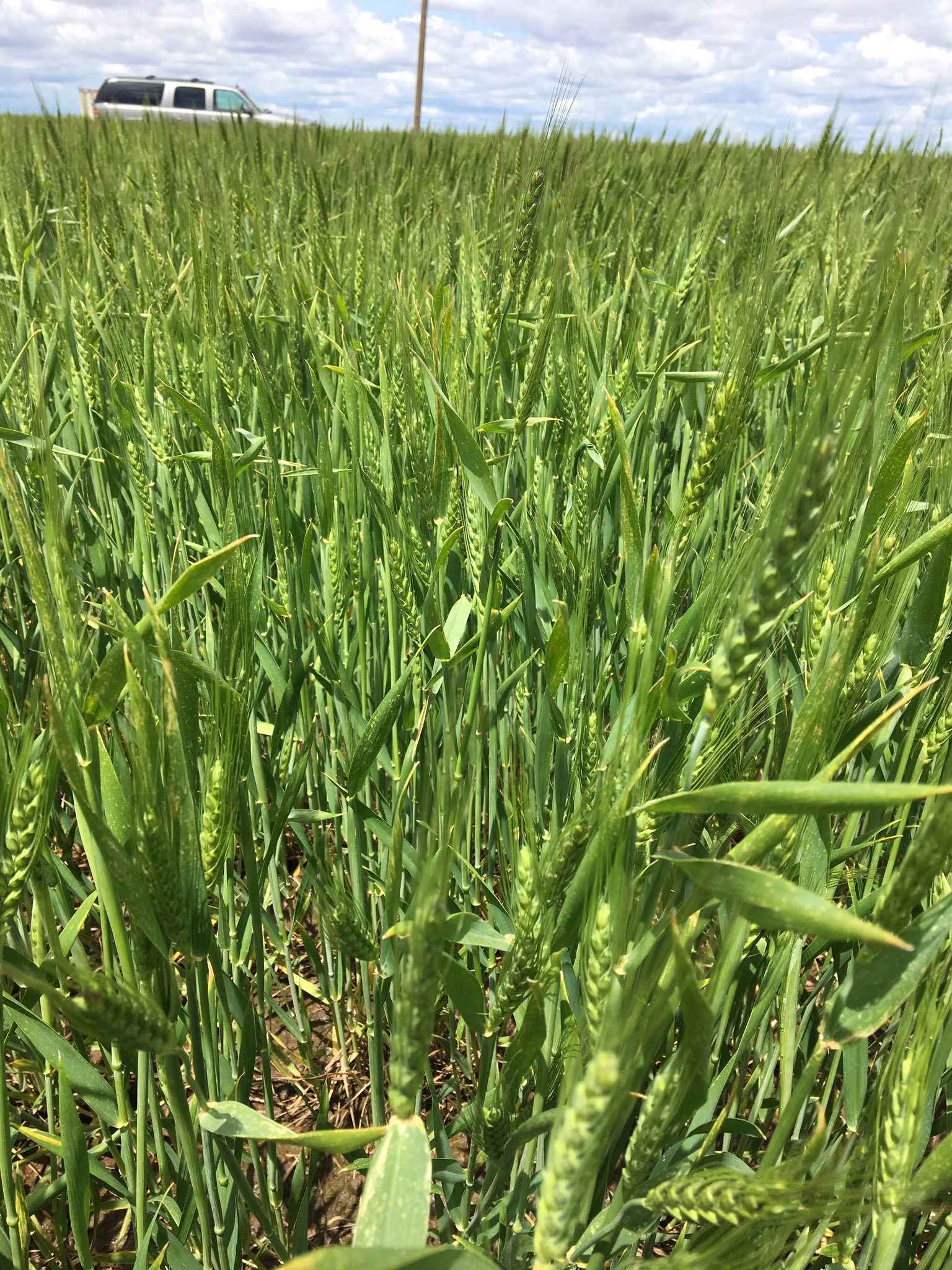
Agricultural News
Western Kansas Wheat Remains an Unknown After Snow, Cold and Disease- Central Kansas Looks Good
Thu, 04 May 2017 04:32:32 CDT
 Day two of the 2017 Wheat Quality Council's Hard Winter Wheat Tour across Kansas started off slowly, as scouts weren't able to evaluate many of the fields in the western third of the state.
Day two of the 2017 Wheat Quality Council's Hard Winter Wheat Tour across Kansas started off slowly, as scouts weren't able to evaluate many of the fields in the western third of the state.
About 70 scouts left Colby early Wednesday morning, May 3, and made their way south and east across the state, ending up in Wichita by evening. The average yield for the day between 18 cars and 205 stops was 46.9 bushels per acre. This was down from 49.3 bushels per acre over the same area last year.
Chris Kirby with the Oklahoma Wheat Commission was one of the scouts that left Colby Wednesday morning and ended up in Wichita at the end of the day. You can hear her analysis by clicking on the LISTEN BAR below.
Even before winter storm Ursa crippled the western third of the state over this past weekend, the wheat was struggling. Wheat Streak Mosaic Virus (WSMV) had already moved into the area, spread by the wheat curl mite, which uses volunteer wheat as a green bridge to move into newly emerging wheat. Because of the economy, there wasn't as much money for controlling volunteer wheat last fall.
According to K-State agronomy specialist Jeanne Falk-Jones, "We had plenty of green bridges, and that's because there wasn't a lot of money in wheat budgets last year, so when it comes to paying to control volunteer wheat, there wasn't as much of that."
Weather conditions started off with adequate moisture in the fall, but went downhill after the beginning of October, so there were poor stands in many fields.
"WSMV was really bad in the western two tiers of counties," said Kansas Wheat's Aaron Harries, VP of Research and Operations. "That's a big problem this year, and it's probably going to have a lot more impact on yield than the snow damage even would, so that's a serious concern there."
At this point in the year, there's nothing producers can do for WSMV.
"They're just at the mercy of the disease, and we'll have to wait and see how much it cuts back on yield," said Harries. "In some cases we've heard of some fields being destroyed because the insurance has already zeroed out those fields."
It's about controlling the volunteer wheat in the fall.
"From a research standpoint, the Kansas Wheat Commission is putting some big funding into projects with Kansas State University to develop genetic resistance, and there is some good new genetic resistance out there. It's just going to take a couple more years to get that crossed into the varieties that exist in the marketplace. But there is some help coming from the genetic standpoint," said Harries.
But that isn't completely accounted for in the day two's yield estimates.
"The tour provides a formula for us to use and a component of that formula is row space and height of wheat plant and being able to count the number of stalks or heads in one foot," said Harries. "In the area where snow had flattened the wheat, we're just not able to do that. So, it was our decision not to try to estimate yields on those fields. Rather, we'll would just look at them and take notes. There's no way we can possibly accurately determine a yield. We'd only be guessing, so we just aren't including those fields in the average we're doing for western Kansas. We're able to find some fields where we can determine those things, and we're using those fields as part of our average. It may be skewed a little bit toward central Kansas, but most of our participants will take that into consideration when they submit their estimates."
It wasn't until cars reached Hodgeman County to the east and Meade County to the south that the snow disappeared and scouts were able to start making yield assessments.
Harries said, "Wheat in south central Kansas really looks good. There's obviously plenty of moisture. Most of the fields we stopped in today were pretty clean. Yields might not be quite as high just because some of the stands are a little thinner. We did stop at some fields that are projected to be above 70 bushels an acre, so there's pretty good potential here. The one thing we're having trouble determining is freeze damage. It seems that we're still a little bit early to see the impact of that freeze about a week ago."
He says the biggest disease issue in south central Kansas was barley yellow dwarf and some reports of rust.
"I've heard some reports of some rust, but it looks like folks have been pretty active in spraying, and I'm sure if the weather dries out and warms up, we'll see a lot more of that."
Until then, it's important to start a conversation with your crop adjuster if you think you might have any damage in your fields.
"You certainly need to get on the book with your insurance agent. Get on the phone and put them on alert. Schedule a time for them to come out and look and assess things. Don't wait for two weeks to see what happens. The insurance agent may take some time to get out there, but give them a call and at least get on their calendars, so you don't get moved to the back of the line. Because there's going to be a backlog of work that those insurance adjusters have to do," Harries concluded.
The tour wraps up in Manhattan on May 4.
Source- Kansas Wheat
WebReadyTM Powered by WireReady® NSI
Top Agricultural News
More Headlines...





